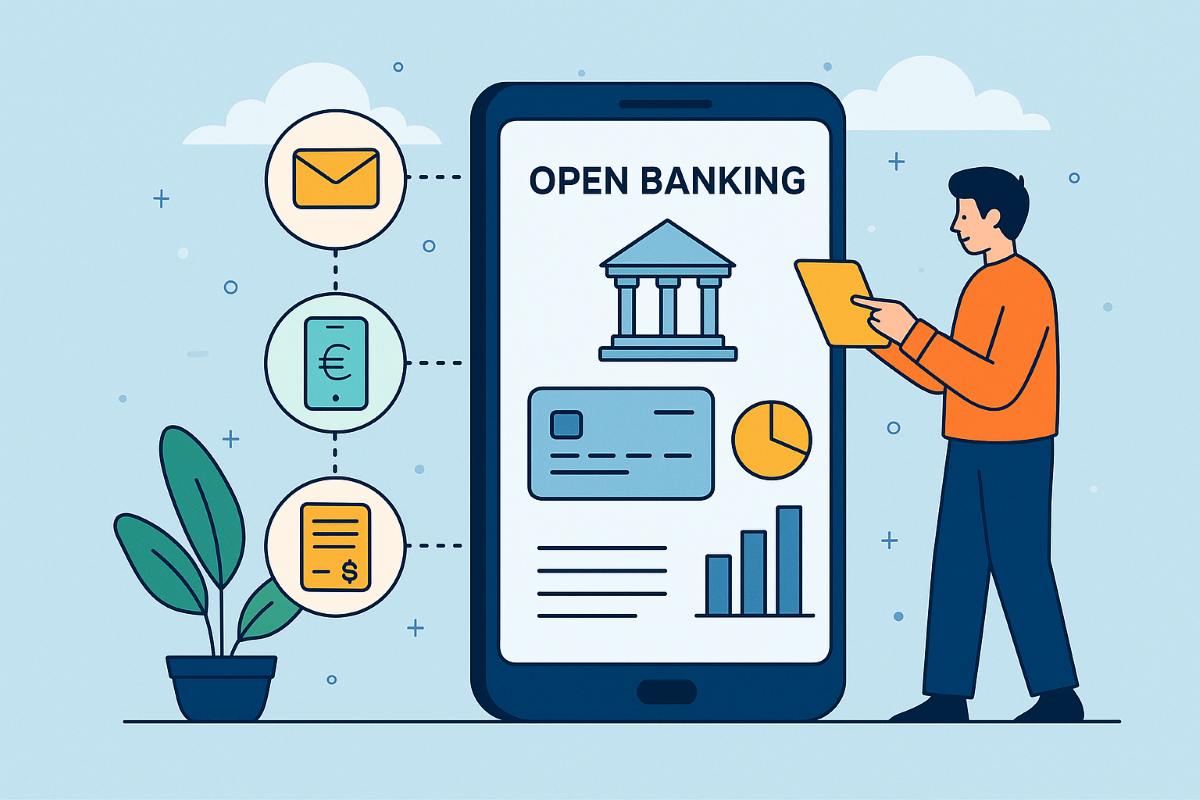In today’s rapidly evolving world of financial technologies, customer experience has taken center stage more than ever before. Within the landscape of digital banking and payment solutions, the open banking model has emerged as one of the most influential systems driving this transformation.
Banks and fintech companies are implementing open banking integrations to offer faster, more secure, and personalized solutions tailored to users’ financial needs.
What Is Open Banking?
Open banking is a digital system that allows customers to share their financial data with third-party service providers. This data sharing is conducted via APIs provided by banks. The goal is to make financial products and services more innovative, efficient, and user-friendly.
Thanks to financial API solutions, users can access their banking data across various platforms. They can view account balances, make payments, and receive personalized financial advice—all within a single application. This not only strengthens the relationship with customers but also builds loyalty and trust.
The Impact of Open Banking Integration on Customer Experience
- Comprehensive Financial Visibility
With open banking, users can view all their accounts from different banks on a single platform. This is highly beneficial not only for individuals but also for SMEs and commercial enterprises. Companies working with multiple banks can manage their entire financial structure from a single dashboard. This visibility simplifies planning, budgeting, and cash flow management.
- Fast and Secure Payment Processes
By enabling payments directly from a bank account, open banking reduces transaction time and minimizes intermediary costs. Since there’s no need to enter card information, transactions are safer. Security protocols and authorization mechanisms ensure that all transactions comply with standards such as PCI DSS.
- Personalized Financial Services
Open banking enables analysis of customer data, including spending history, income-expense patterns, and financial behavior. This allows institutions to offer customized recommendations, loans, savings plans, or payment reminders. Customers are guided toward services that truly meet their needs, resulting in a more effective user experience.
- Automated Financial Management
Systems built on open banking infrastructure can automatically manage payments, bills, and income-expense tracking for users. For example, a user might receive a reminder for an unpaid invoice along with a suggested payment plan. This not only informs customers but also empowers them with immediate solutions.
- Real-Time Data Sharing via API
Financial API integration ensures that customer data is transferred accurately and in real time to relevant systems. This leads to more accurate support from customer service teams. Synchronization across platforms also prevents delays during any transaction.
Benefits of Open Banking for Businesses
Enhanced Customer Loyalty
Customers prefer to engage long-term with platforms that understand them and offer tailored recommendations. Open banking enables financial institutions to provide this depth of service. Interfaces and suggestions designed around user habits increase customer loyalty and satisfaction.
Operational Efficiency
Open banking allows businesses to handle their financial operations more quickly and efficiently. Automated accounting entries, simplified cash flow management, and integrated payment systems save both time and costs.
Competitive Advantage
Customer expectations in the financial sector are evolving rapidly. Traditional methods are no longer sufficient to meet dynamic user needs. Companies that leverage open banking infrastructure can provide flexible solutions that help them stand out from the competition.
New Revenue Models
Open banking enables platforms to offer not only banking services but also integrated third-party applications. Services such as insurance, investment advisory, or payment tracking can be offered under one roof, creating new revenue streams.
Security and Regulatory Compliance
Since open banking is built around data sharing, ensuring data security is paramount. Full compliance with regulations such as GDPR and KVKK is required. Additionally, API systems must incorporate strong security layers, including authorization, encryption, and identity verification.
Firisbe’s open banking infrastructure is equipped with these security features, helping to minimize risk for both customers and service providers.
Delivering High-Quality Customer Experience with Open Banking
Open banking technologies not only enhance customer experience—they transform it. When real-time data sharing, personalized service suggestions, speed, and security come together, users become more satisfied and loyal. Businesses, in turn, benefit from operational efficiency and a competitive edge.
Fintech companies and banks that prioritize customer experience can achieve sustainable growth and loyalty by embracing this approach. The capabilities of open banking make digital financial services more inclusive, accessible, and personalized—becoming an essential part of digital transformation for both individuals and businesses.
Frequently Asked Questions (FAQs)
- What is Open Banking and how does it improve customer experience?
Open banking is a system that enables customers to securely share their financial data with third parties via APIs. Through this system, users can access multiple accounts from one place, simplify transactions, and receive personalized financial services. - Which businesses benefit from open banking applications?
Open banking solutions offer significant advantages for any business that uses financial data analytics, including fintech companies, digital banks, e-commerce platforms, and payment service providers. - Is the use of open banking secure?
Yes. Professional infrastructure providers like Firisbe implement robust security protocols in open banking systems, including strong encryption, identity verification, and data permission management. This ensures that user data is protected both legally and technically. - How is customer data analyzed through open banking?
Financial data obtained via API-based systems allows for the analysis of users’ spending habits, payment behavior, and income-expense balance. These insights are used to deliver customized financial solutions. - How does open banking improve business operations?
Open banking eliminates manual financial tracking. Real-time payment monitoring, automated accounting integration, and consolidated financial reporting help businesses make faster, more efficient decisions.


Leave A Comment